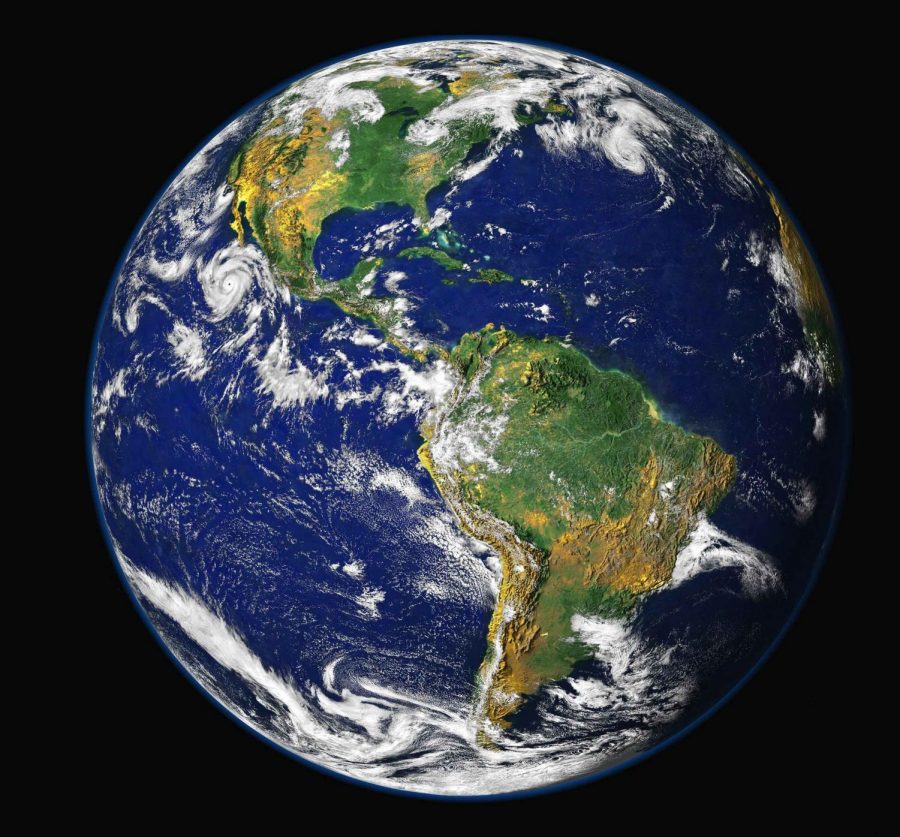Be mindful of the effects of climate change
Opinion Columnist Kevin Wiggins explains why people should be cognizant of the effects of climate change.
Oct 7, 2019
Sexing up history is something that historians have struggled with for generations. Of all the dogmas of history, the fall of Rome has been a focal point of Western fascination since time immemorial.
One of the most recent and brilliant products of this fascination is Kyle Harper’s “Fate of Rome” which sets him up not only to be an iconoclast, but as a historian whose work inspires action for our own moment as much as it un-conceals the past. Through newly collected climatological data, anthropological findings and the writings of the Romans themselves, Harper reimagines the greatest orthodoxy of western history, while still inspiring his readers to think of the world they find themselves in.
The traditional narrative of the fall of Rome reads something like this: internal power-politics weakened the empire, and rabid barbarian hordes poured over the borders. Thus, the “dark ages” began, and the church was the only institution from which light could shineth in the darkness. Harper challenges this notion by arguing that recent developments in multiple scientific fields, when paired with primary sources suddenly shape a dramatically different picture of what weakened and ultimately caused the “fall” of the Roman Empire. So then, what is this classicist’s answer to this seemingly unanswerable question? Climate change, and the consequences which accompany it.
Environmental history is one of the more recent trends in academic circles, but climatological data can entirely refocus our understanding of the past. Roughly between 250 B.C. – 400 C.E., the average temperature of the Mediterranean world increased gently. Tree rings from Italy, Alpine glacial records, mollusk shells from Iceland and Iberian pollen indexes all point to a period of dramatic warming that peaked in approximately 150 A.D. and ending around 400 A.D. The warming that occurred had dramatic effects on population. Not only was food more readily available, but the Mediterranean world became dramatically more interconnected. Trade, provincial migration, tourism and the Roman bureaucratic machinery all made travel possible that had been inconceivable before.
Climate played a major role in this change. Wheat for example, a crop the Romans relied on heavily could suddenly be planted in northern France, Britain and Hungary. Population rose, and urban centers began to pepper the Mediterranean landscape. Yet, along with this interconnectedness came the inevitable threat of disease and weakness to parasitically driven catastrophe. Recent analysis of femurs from the 3rd century has given rise to theories that present trade as the origin of a number of infamous plagues that decimated the Roman Empire’s population. The “Antonine” and “Justinianic” plagues are arguably two of the most devastating plagues in European history besides the Black Death. Both decimated the Empire’s population and resulted in a century of instability. Swift temperature changes resulted in widespread famine, which further lowered the population of the Empire and affected its border regions severely.
It was into these centuries of instability that the “hordes of Barbarians” entered Roman history on stage left. The results of changing global temperatures yielded large swathes of the Eurasian steppe uninhabitable for tribes who subsisted off of grazing their immense herds on steppe grassland. Massive displacements of peoples such as the Scythians, Alans, Magyars, Slavs and the infamous Huns all were displaced and began migrating across the central Asian steppe. These peoples and those they came in contact with such as the Goths, Vandals and Longobardii all found themselves on the borders of settled peoples.
Migratory tribes caused the Chinese to build the Great Wall, but in the case of the Romans massive population loss caused by disease had thinned the ranks of the Roman army to the point where they could not be replaced. Changes in temperature meant that crop yields gradually became smaller and smaller so that by the 4th century, the Empire was a shadow of itself and no longer able to defend itself from outside threats.
What Harper’s account inspires is not only a reimagining of the fall of Rome, but it serves as a window into the effects of climate on civilizational events. Not only does it make sense of the church fathers who foresaw the end times in the 5th century, but it invites us to be cognizant of the effects of climate on civilizational collapse. Any good history should engender pregnant reflection on one’s own times and, while “The Fate of Rome” is not yet ours, Harper inspires us to wonder about the future of our own civilization.


















